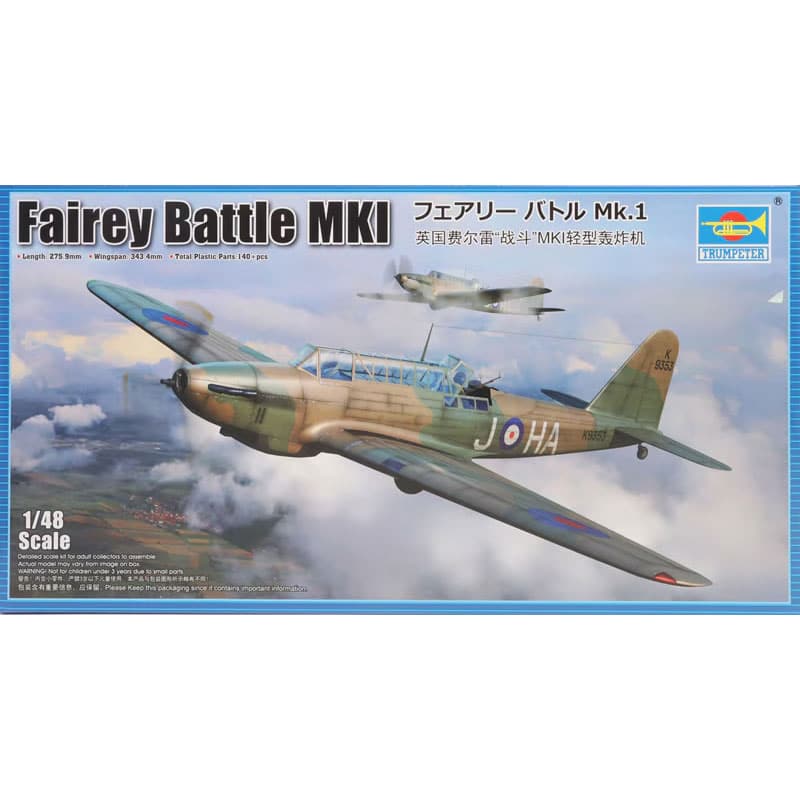The Fairey Battle Mk I was a British single-engine light bomber developed by the Fairey Aviation Company and introduced into Royal Air Force service in the late 1930s. Designed in response to Air Ministry Specification P.27/32, it was intended to replace the ageing biplane bombers of the interwar period with a more modern, monoplane design.
First flown in 1936, the Battle was powered by a Rolls-Royce Merlin engine and featured a sleek, all-metal airframe with a low-wing configuration. It carried a crew of three—pilot, observer, and wireless operator/gunner—and could carry up to 1,000 lbs of bombs. At the time of its introduction, the Fairey Battle was considered advanced, with superior speed and range compared to older designs.
However, by the outbreak of World War II in 1939, the Battle was already becoming obsolete. During the early stages of the war, it saw extensive service, particularly during the Battle of France in 1940. Its lack of speed, limited defensive armament, and vulnerability to faster German fighters and anti-aircraft fire led to devastating losses. In one notorious operation on 14 May 1940, 13 of 16 Battles were shot down during a single mission targeting bridges over the River Meuse.
Following these heavy losses, the Battle was withdrawn from front-line bombing duties. It continued in service in training, target-towing, and other secondary roles throughout the war. Over 2,000 Fairey Battles were built, including variants used by the Royal Canadian Air Force and other Commonwealth forces.
Though its combat effectiveness was short-lived, the Fairey Battle played a key transitional role in RAF bomber development, bridging the gap between the biplanes of the 1920s and the more capable twin-engined bombers that would dominate the later war years.
Product Details:
- Scale: 1/48
- Manufacturer: Trumpeter
- Kit Number: 05831
- Subject: Fairey Battle Mk I – a British single-engine light bomber used in the early stages of World War II by the RAF.
- Type: Plastic model kit (unassembled and unpainted)
Features
- Detailed cockpit and bomb bay
- Photo-etched parts may be included
- Decals for multiple RAF marking options
- Clear canopy parts
- Fine surface detailing with engraved panel lines


